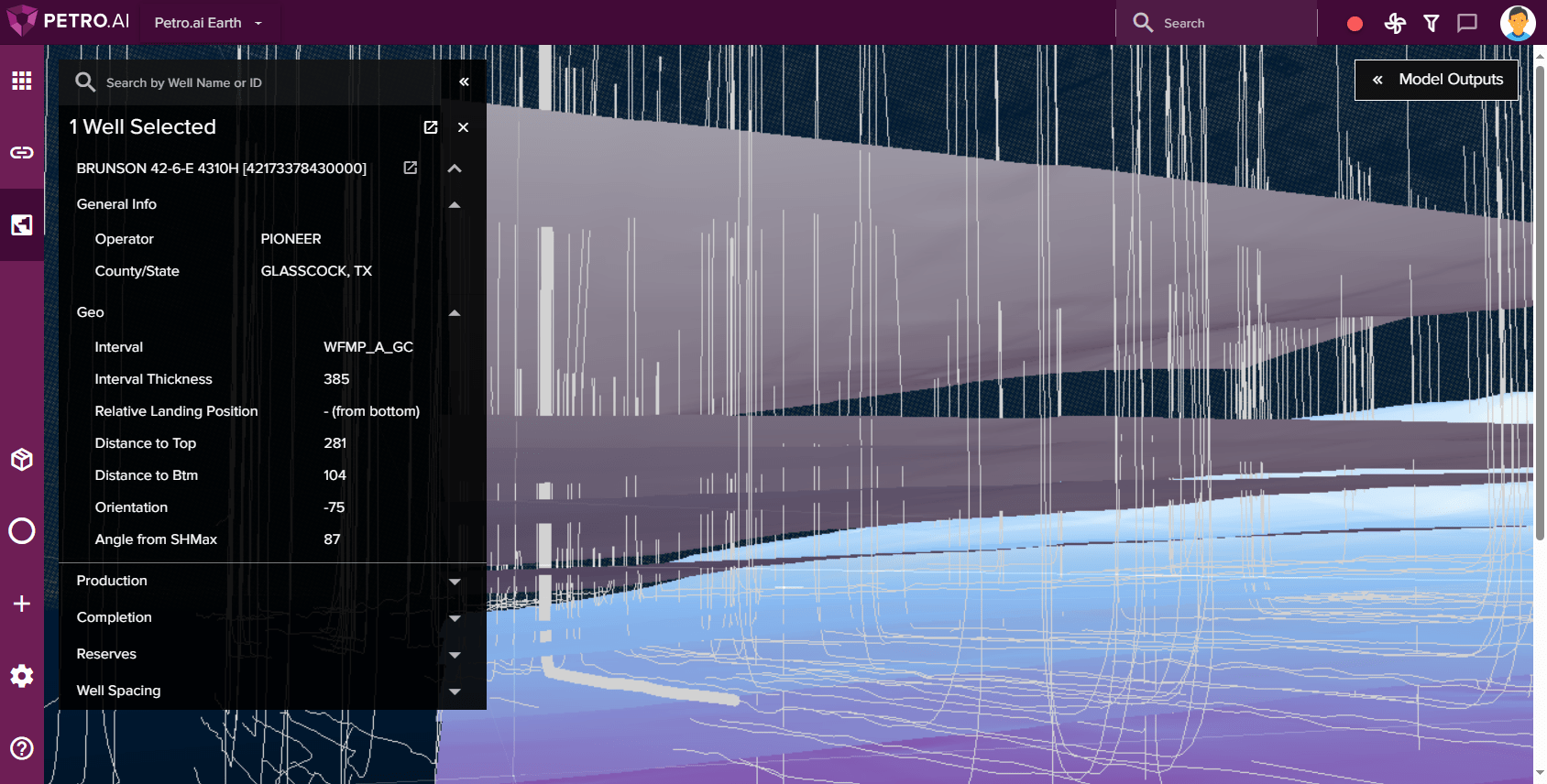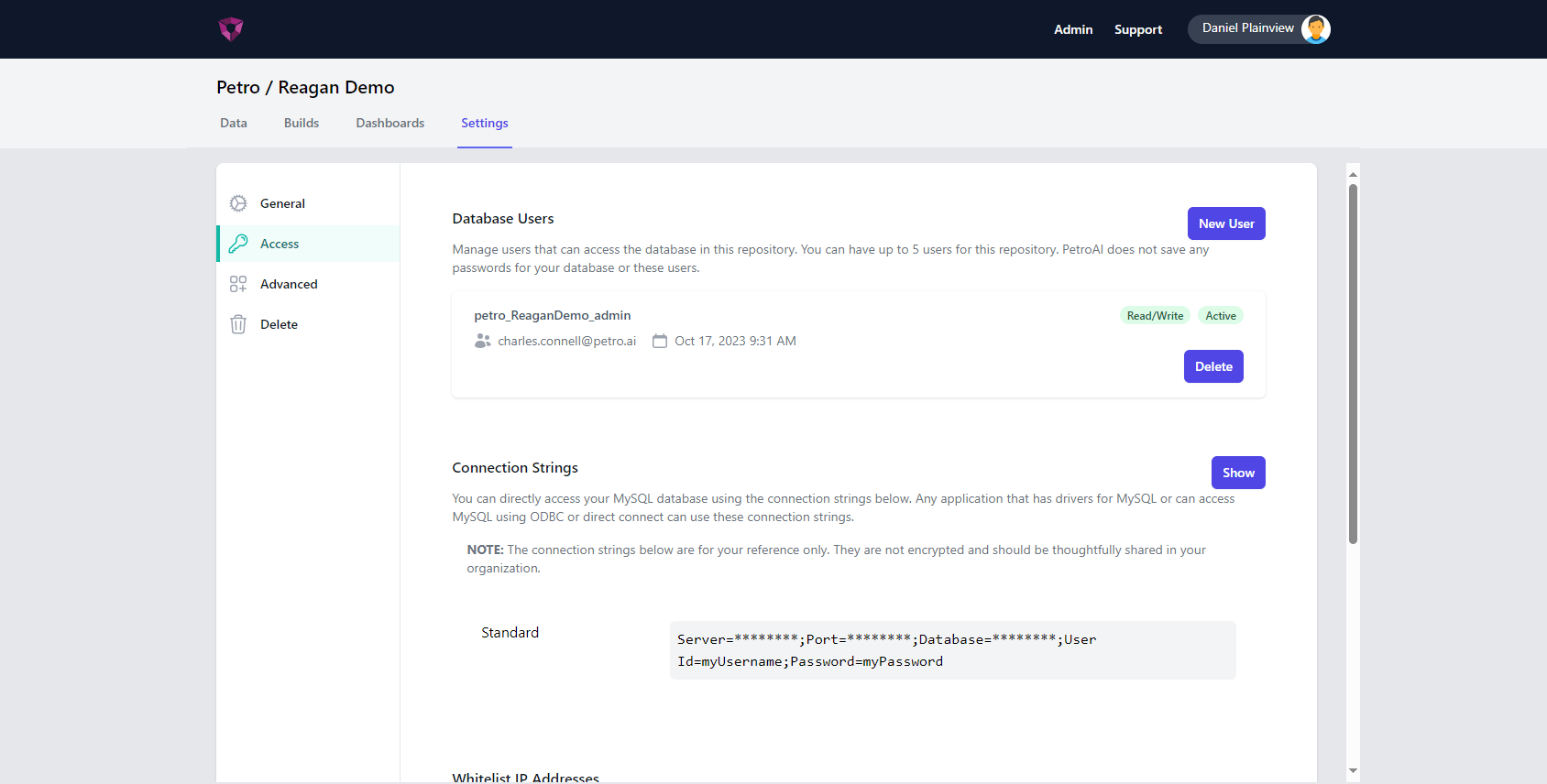Level-up your Shale Insights
PetroAI automates and improves the current processes you are running to produce customized shale analytics dashboards and type curve tools that correctly handle parent/child dynamics. Set-it-and-forget-it technology keeps it running all the time whenever your data or assumptions change.
Deliver proprietary insights at basin scale to your entire company.
Integrate type curve creation, A&D evaluation, infill well placement, and development planning with one trustworthy, AI powered platform.
Predict well performance for any pad design across an AOI while normalizing for well spacing, completion design, and reservoir quality.
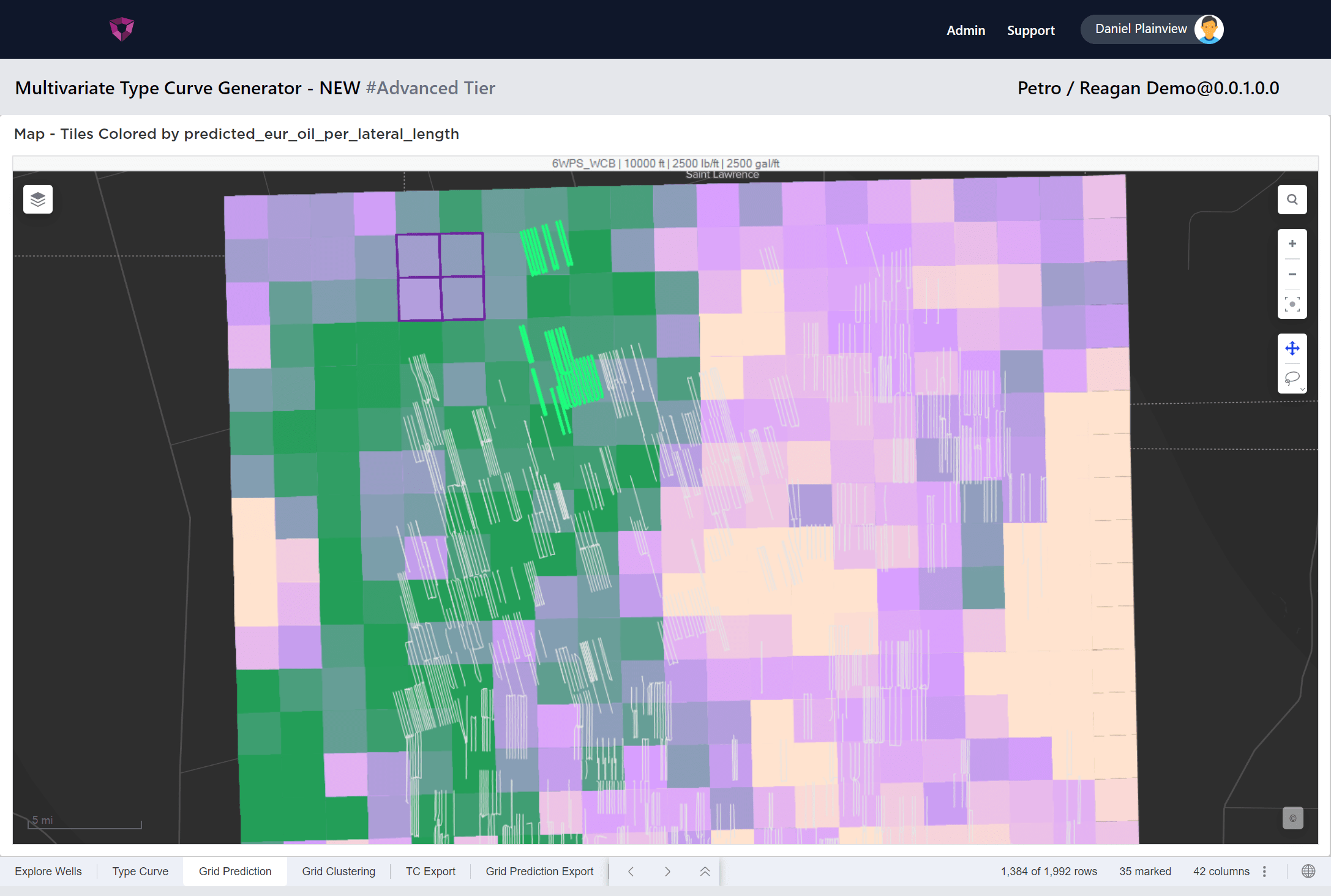
Land every well using internal structure grids and generate well spacing statistics along Shmax with parent/child/sibling classifications.
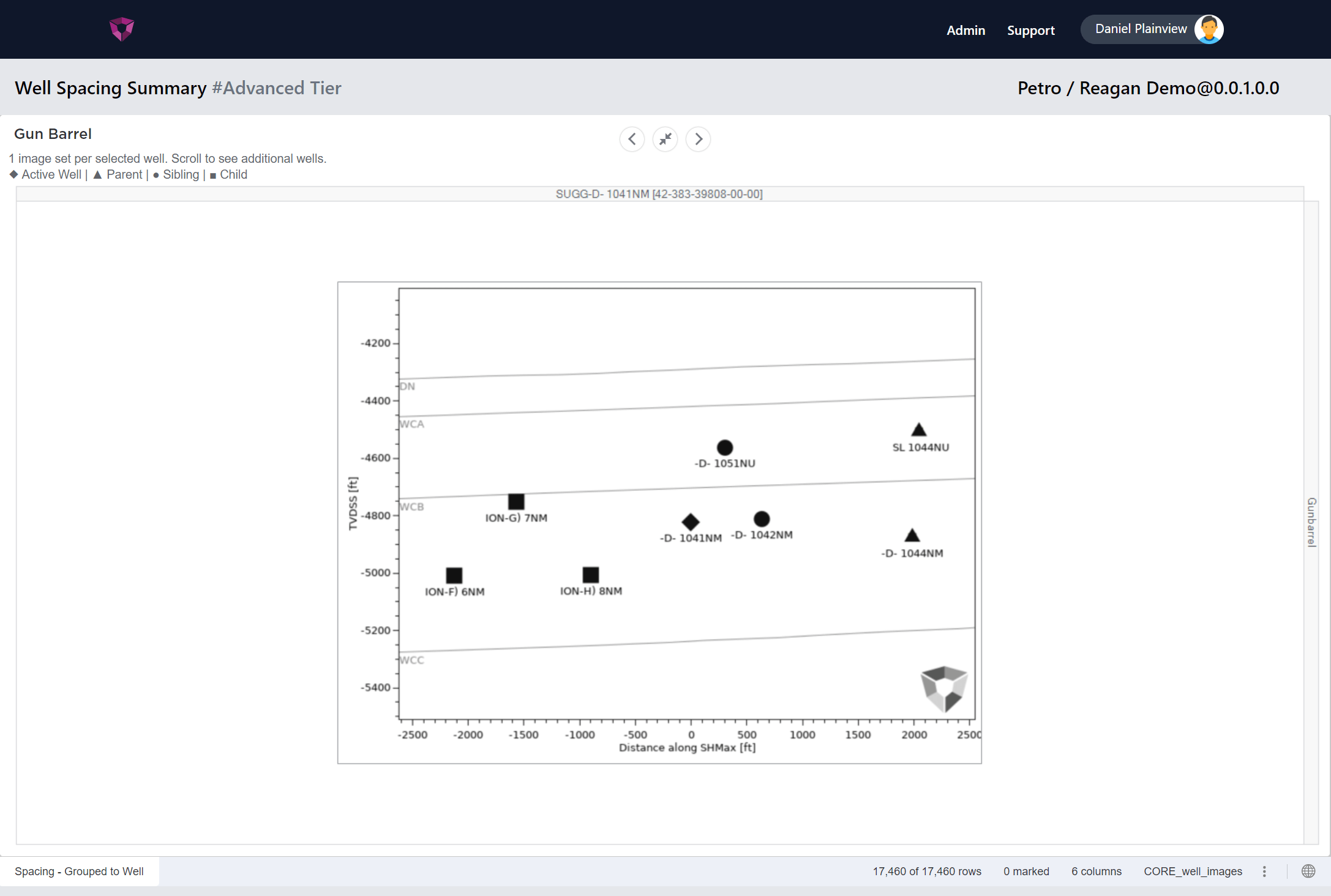
Train and refine AI models to predict well performance using a proprietary blend of subsurface, well design, and volumetric features.
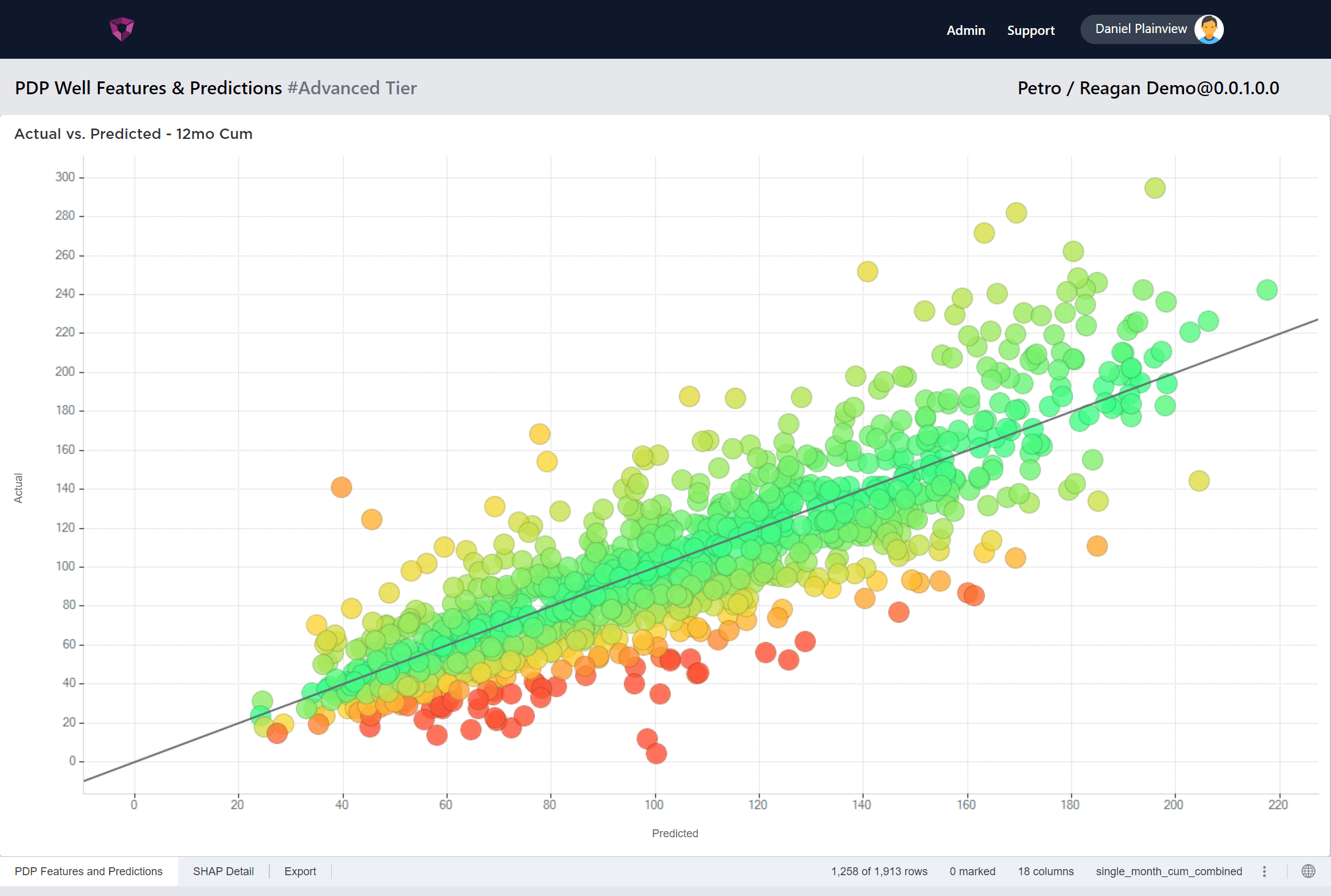
Quantify completion, spacing, and geologic tradeoffs while identifying drivers of production for all wells in the dataset.
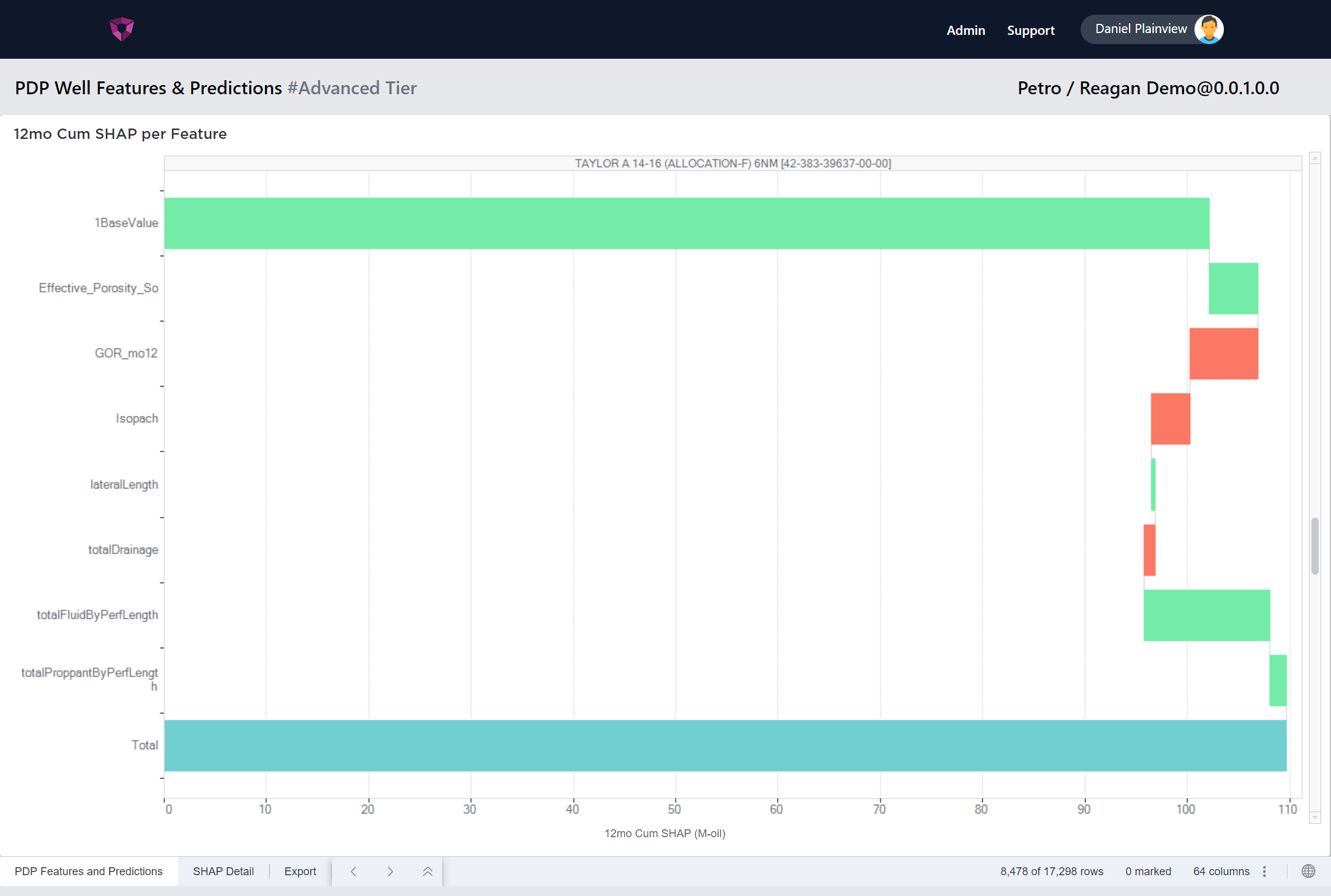
Seamless Access to Powerful Data Products
PetroAI generates forecasts, sensitivities, and dynamic dashboards using your data.
Uses geomechanics to create a highly predictive feature that accounts for well spacing and parent-child interactions.
PetroAI provides a generalized Frac Fingerprint that is pre-trained. Clients can also train custom Frac Fingerprints using field diagnostic data and simulation outputs.
Create a unique dataset that leverages your internal characterizations alongside subscription data.
Combine well headers, public and private production data, and subsurface interpretations into a single data set.
Connect existing workflows and BI tools to PetroAI outputs.
Set up internal routines to push data at regular schedules, updating models and populating established workflows with the best available data.
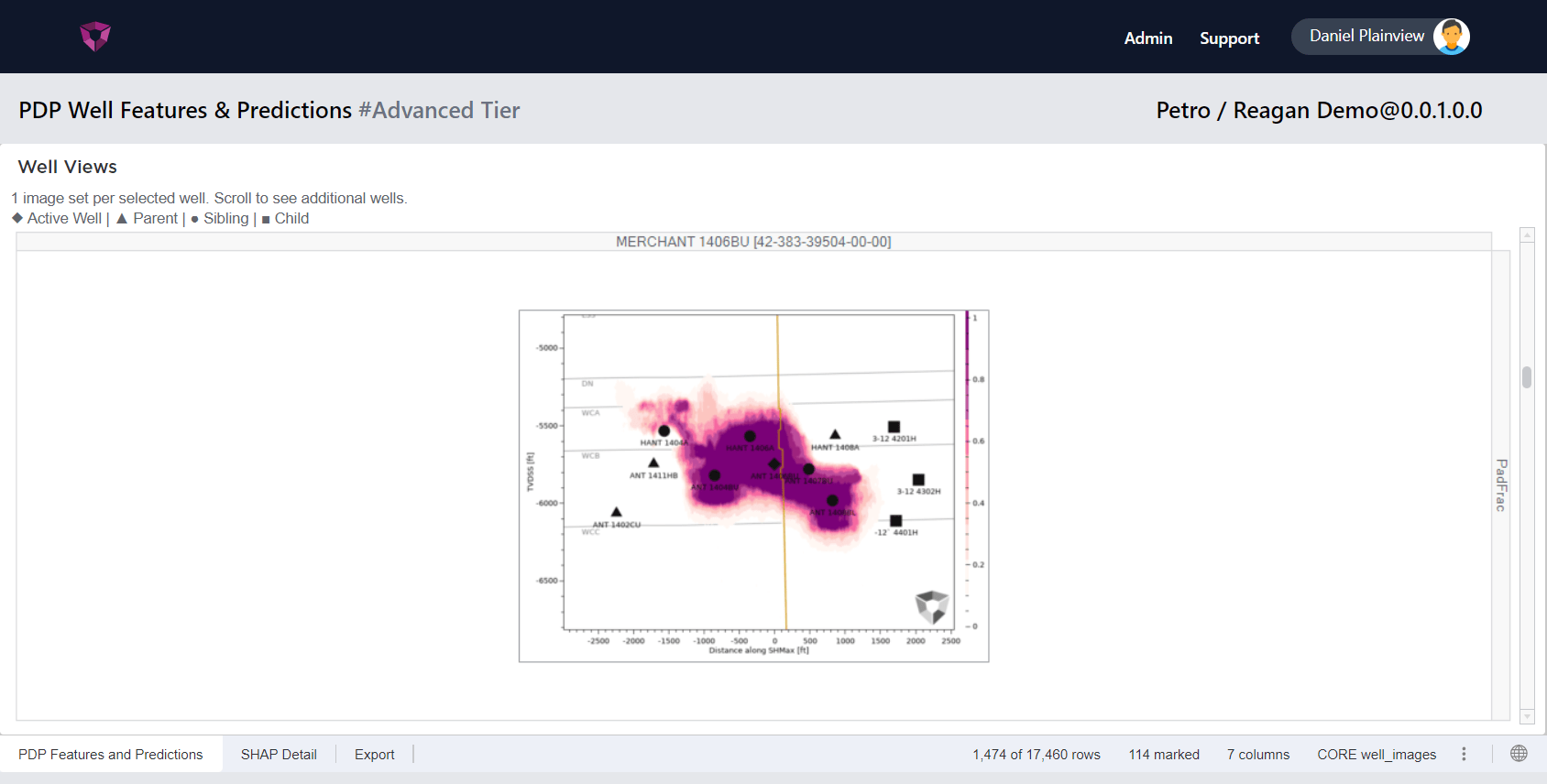
Ready to get started?
We're progressively onboarding new clients, and we can't wait to share PetroAI with you. Join our waitlist today to secure your spot in the future of shale.
The most powerful predictions in shale.
Our customers love PetroAI for its accurate, tested, and straightforward approach to merging geoscience and reservoir data to predict full time-series well production.
For two years with DSU Design Service, we ran PetroAI for some of the hardest infill wells in L48 US basins. Our customers' average double blind accuracy on 12 month cum oil was over 90%.
Frequently asked questions
Bringing AI into your organization can be daunting. We're here to help. PetroAI is a fully managed application, meaning we take care of the heavy lifting so you can focus on what matters most.
General
How do I access PetroAI?
PetroAI is a web-based application and can be accessed at https://cloud.petro.ai/. Authorized users can log in using their Microsoft credentials. If you’re a first-time user, you can get access by submitting a support ticket to support@petro.ai.
Where can I get help?
You can access support materials at https://support.petro.ai or submit a ticket to support@petro.ai. The support website also allows users to track the status of any tickets they have submitted.
How is user access controlled?
Anyone at an organization with a current PetroAI subscription can request access to PetroAI. New users will need approval from their organization admin before access is granted.
Data
How is data organized inside PetroAI?
Source data, calculated features, and model outputs are organized into unique repositories inside your PetroAI environment. For example, an operator might have separate repositories for each basin or for each live A&D project.
What internal IT resources are needed to use and run PetroAI?
Your IT team might have restrictions on using Microsoft single sign on which will need to be enabled for PetroAI. You will still be able to log in by creating a username and password. Otherwise, no IT support is needed as PetroAI is a fully hosted and managed application.
How can I export data from PetroAI?
Users can right-click on any table and export to download a CSV. In addition, SQL database connections are available to access the underlying data behind each dashboard.
Am I able to export a full time series forecast for a given well?
Yes. PetroAI allows download and export of both the Arps parameters and monthly time series data for every prediction to facilitate further analysis.
How is data loaded into PetroAI?
Source data, such as monthly production or drilling surveys, is loaded into a SQL database hosted by PetroAI. From the source database, PetroAI picks up the data and runs it through the calculation and modeling pipeline. This facilitates the setup of recurring loads to continuously refresh the data.
Do I need to load my data or will PetroAI handle that?
Depending on where your data is located, PetroAI can help you get it loaded. If you’re loading from CSV files, you can simply drag and drop them to your PetroAI environment, and we will handle the mapping and loading. If you already have the data in a database, we can help you map the columns into our schema.
What data does PetroAI provide, and what do I need to upload?
PetroAI does not provide any source data. You can get started with PetroAI by uploading only well data, monthly production, and drilling surveys. More advanced packages allow you to start with your internal earth model. PetroAI will use that data to calculate new features (e.g. well spacing using the client-provided directional surveys).
How do I update data in PetroAI with next month’s production data or a reinterpreted grid?
Users can set up routines to automatically push data from internal databases to PetroAI. Alternatively, users can also drag and drop these files into PetroAI and request a model update.
What is the recommended resolution for subsurface attributes provided to PetroAI?
PetroAI is flexible and can handle a range of resolutions. Our recommendation is to have grids with at least 1000m resolution (i.e. 1000m between grid points).
Calculations
How does PetroAI calculate well spacing?
Well spacing metrics are calculated in stress space. The global stress map from Lund, Snee, and Zoback is used as a starting reference and the orientation of SHmax is interpolated to every well location. This orientation defines how PetroAI will find offset wells and calculate the horizontal, vertical, and direct distance from each well to each of its offsets.
How does PetroAI apply parent/child/sibling classifications?
Well interactions are calculated for each well-to-well pair by PetroAI. These pairs are automatically identified based on two configurable inputs. The first is the offset distance, which defines the maximum direct, horizontal, or vertical distance to find well pairs. The second input is the time between completion dates. For example, this value could be set to 180 days. In this case any two wells completed within 179 days apart would be classified as sibling wells while two wells completed 181 days apart would have a parent-child relationship. These classifications are automatically performed for all wells in the data set.
Does PetroAI classify well landings, or do I need to provide that?
PetroAI automatically lands all the wells in the data set when you provide structure grids. Drilling surveys are used in conjunction with your interpreted structure grids to determine the landing interval and calculate the relative position of well inside the target. A relative landing position ranges between 0% and 100% where 0% is the lower bound of an interval and 100% is at the top. In addition, the vertical distance from the top and bottom of the internal is provided. The wellbore can also be split into multiple segments and these calculations are done for each segment to capture variations along the lateral.
Does PetroAI provide a DCA forecast for wells?
Yes, part of the PetroAI calculation pipeline auto-forecasts all the wells in the data set to create separate oil, gas, and water forecasts. Users can configure the Arps ranges they want to apply to create the forecasts. These forecasts and EURs may be accessed inside the PetroAI web application or through a SQL connection.
Frac Geometry
What is a Frac Fingerprint?
The Frac Fingerprint is proprietary modeling technology created by PetroAI to predict fracture responses and drainage volumes of shale wells. The Frac Fingerprint combines deep learning techniques with geomechanics to create a highly predictive feature that captures well spacing, well interactions, and variations in vertical stress. The Frac Fingerprint creates a unique cross-sectional calculation of individual well drainage.
What is the difference between the Frac Fingerprint and just using ovals in PetroAI?
The Frac Fingerprint is a predictive model that has been trained on completion diagnostic data or fracture simulations and responds to variations in the vertical stress. When a Frac Fingerprint is not available, PetroAI can still generate a simple fracture geometry using assumed fracture widths and heights. This simplified geometry can still capture variations between parent, child, and sibling wells, but does not respond to changes in vertical stress.
How does PetroAI manage fracture asymmetry between parent and child wells?
Whether using a Frac Fingerprint or a simplified fracture geometry, PetroAI will use the well classifications of parent, child, or sibling to account for well interactions in the drainage feature. Parent wells will get the full drainage volume predicted. Child wells that have a fracture geometry overlapping with a parent well have this volume removed. Sibling wells with overlapping drainage are forced to share the volume. In this way, the available volume in a pad or section is not double counted. The drainage feature scales with well spacing while also accounting for the different types of well interactions.
Do I need to have microseismic data to use the Frac Fingerprint?
No. While microseismic data has been shown to provide a good representation of the fracture geometry, a Frac Fingerprint can also be trained on fracture simulations. Other data types can also be included to fine-tune the geometry, including long-term geochemistry and tracer data.
Are Frac Fingerprints generated for every well?
Yes. If a Frac Fingerprint model is available, PetroAI will interpolate the local vertical stress profile at each well location using the client-provided structure grids to then predict the Frac Fingerprint. Even when a Frac Fingerprint is not available, PetroAI can still use a simple fracture geometry (e.g. ovals) to predict a unique drainage value for every well.
Modeling
How are model features selected in PetroAI?
Clients can do their own exploratory analysis and feature correlation evaluation using dashboards inside PetroAI. The team at PetroAI also has deep expertise in building predictive models for shale and can provide expert guidance on feature selection.
How does PetroAI report the relative contribution of features used to make a prediction?
PetroAI provides several diagnostic tools to grade overall performance and reveal model methodology to arrive at its prediction for a given well. Feature importance plots are used to show the relative importance of each feature in a model. In addition, users can access charts that show the SHAP values for any model prediction. These charts show how each feature contributes to the prediction by starting at a median value and then providing the contribution, either positive or negative, from each feature to arrive at the final prediction from the model.
How do I change a model feature in PetroAI?
If you want to try a new feature in your model, simply submit a new build request and add comments about the features you would like to add or remove from the next model build.
How do I know if a model is accurate?
PetroAI provides tools to investigate model performance both in aggregate, as well as on a per-well basis. As part of creating a new model, PetroAI uses a 5-fold cross-validation technique. A model is created using 80% of the wells for training data while making blind predictions on the remaining 20%. This process is repeated five times, resulting in a blind prediction for each well in the data set. These results are available in a dashboard for review in cross plots, and box and whisker plots to look at different trends in the predictions. The accuracy of any particular well can also be reviewed to compare its actual value to the predicted value.
How long does it take to build a new model or run a new sensitivity PetroAI?
Typically, new builds take between 2 and 5 days. The time it takes to complete a build depends on the magnitude of the changes being made. For example, updates to the earth model can have significant downstream effects and take longer than requests to run an additional spacing scenario.
Predictions and Sensitivities
What is a multivariate type curve?
The multivariate type curve represents model predictions for a given area. A traditional type curve would be the average of some analog well set. The multivariate type curve is a unique prediction given a specific well design (lateral length, completion intensity, landing target) and geologic attributes of the well location.
How do I interact with PetroAI predictions?
Users can access multiple dashboards and workflows inside the PetroAI web application. In addition, model outputs and predictions can be accessed via a SQL database, allowing for easy integration into existing workflows.
Can PetroAI run sensitivities on various completion designs?
Yes, PetroAI generates many forecasts for each well based across a range of completion designs.
Can PetroAI generate sensitivities for various well spacing designs (e.g. 4 wells per section vs 5 wells per section or stacked vs. staggered)?
Yes. PetroAI can make predictions for a given section or can generate performance maps across an area at various well configurations. These configurations may range from a single parent well to specific, multi-bench configurations. This allows users to browse heat maps of parent well performance, or interior well performance, or well spacing trends across a county or basin.
Can PetroAI generate inventory forecasts for individual “well sticks”?
Yes. Users can upload a template of inventory locations to generate a unique prediction for each well. The inventory template can include completion dates to account for any future parent/child interactions that will be created.
Can I customize the sensitivities I’d like to see? If so, how is this information shared with PetroAI?
Most dashboards within PetroAI include sensitivities on engineering inputs (e.g. proppant loading). Users can request a new build with additional sensitivities if the default dashboards do not capture the appropriate features or ranges of values.
